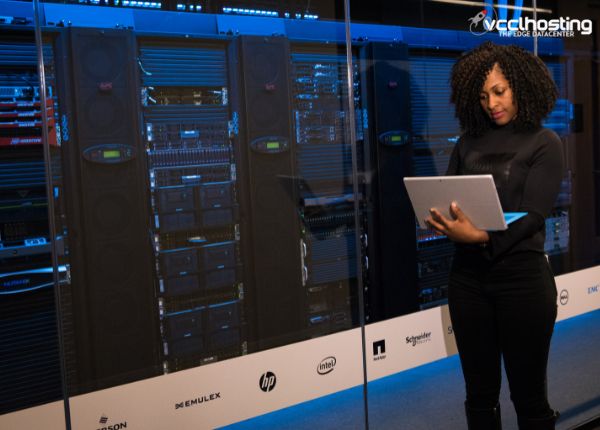
What are Windows server versions and its major differences?
What is a Windows Server
Windows Server is a tailored operating system developed by Microsoft to meet the specific needs of server-based computing. It provides a solid foundation for hosting programs, managing network resources, and storing data in a networked context.
One important feature of this is its progression over time. It was first released in 2003, and subsequent versions have improved on its predecessor. These versions include new features, upgrades, and security updates to address the evolving needs of modern computing environments.
One of the primary functions of Windows Server is to provide a robust and secure platform for running applications. What are Windows server versions and its major differences include features such as Active Directory, which centralizes user and resource management, making huge networks easier to operate.
Additionally, this supports a variety of programming languages and frameworks, allowing developers to create a diverse range of applications.
Another important feature of the Server is its scalability. It is suitable for both small organizations with a few users and large enterprises with thousands of users. This enables clustering and load balancing, allowing businesses to extend their infrastructure as needed to meet increasing demand.
Security is also a high focus for Server. It offers features such as Windows Defender, which protects against malware and other security threats. This also offers encryption and secure communication protocols, which protect data at rest and in transit.
Windows Server is also recognized for its compatibility with a variety of Hardware and software. It supports virtualization, which enables several virtual computers to run on the same physical server. This allows enterprises to get the most out of their hardware expenditures while also increasing productivity.
To summarize, Windows Server is a diverse and powerful operating system developed for server-based computing. It offers a robust and secure environment for hosting applications, managing network resources, and storing data. With its scalability, security, and interoperability, this is a popular choice for businesses of all sizes looking to develop and manage their server infrastructure.

What are Windows server versions and its major differences?
Windows Server, Microsoft’s dedicated operating system for servers, has undergone significant evolution, with each version and edition tailored to meet specific needs and requirements. These editions cater to diverse audiences and organizational goals, offering a range of features and capabilities. While the server version indicates the year of release, the edition depends on the license used, allowing for flexibility in upgrading to different editions as needed. This guide aims to help network administrators understand the differences between Windows Server versions and editions, . Additionally, it highlights the importance of using a robust server monitoring tool, such as SolarWinds® Server & Application Monitor, to optimize server performance effectively.
1. Windows Server 2000: It was introduced in 2000 as a considerable enhancement over Windows NT Server.
- Key enhancements were Active Directory for centralized user and resource management, support for the most recent hardware and peripherals, and increased dependability and scalability.
- Specialized editions, such as Advanced Server and Datacenter Server, provided additional functionality for high-performance and enterprise computing.
2. Windows Server 2003: Released in 2003, it significantly improved security, dependability, and performance.
- New features include Volume Shadow Copy Service (VSS) for backup and restore and Internet Information Services (IIS) 6.0 for web hosting.
- Improved support for the.NET Framework and administration tools, such as Microsoft Administration Console (MMC) 2.0.
3. Windows Server 2008: Released in 2008, it aimed to enhance security, manageability, and performance.
- Introduced Server Core.
- Added Server Core installation option for a smaller footprint, lowering the attack surface.
- Improved Active Directory with features such as Read-Only Domain Controllers (RODC) and better Group Policy management.
4. Windows Server 2008 R2: Released in 2009, it was a substantial update that improved virtualization, scalability, and management capabilities.
- Launched Hyper-V for server virtualization, allowing businesses to consolidate workloads and cut hardware expenses.
- Improved remote desktop services and added new features like as DirectAccess, which provides secure remote access.
5. Windows Server 2012 was released in 2012 and supports cloud computing and virtualization.
- New features include Storage Spaces for storage virtualization and Hyper-V Replica for disaster recovery.
- Added new Server Manager for centralized server management and PowerShell 3.0 for automation.
6. Windows Server 2012 R2:
- It was a 2013 upgrade to Windows Server 2012 that added various new features and improved performance.
- better support for cloud integration, including Azure Active Directory integration and better storage capabilities.
- Made enhancements to virtualization, networking, and access control.
7. Windows Server 2016 was released in 2016 with an emphasis on hybrid cloud integration and security.
- Nano Server was introduced for lightweight and containerized applications, while Hyper-V was improved for increased performance and scalability.
- Added features such as Windows Defender for better security and increased PowerShell compatibility.
8. Windows Server 2019: – Released in 2019, it prioritizes hybrid cloud scenarios, security, and application innovation.
- New features include Windows Admin Center, which simplifies server management, and Kubernetes support for container orchestration.
- Enhanced security with features such as Shielded Virtual Machines and Windows Defender ATP.
Windows Server has evolved throughout time to meet the evolving demands of businesses and organizations, delivering a dependable and scalable platform for hosting applications, services, and data. You can consider the following points to determine what kind of server you would choose as per the needs of your business.
Also read: How to access Server







